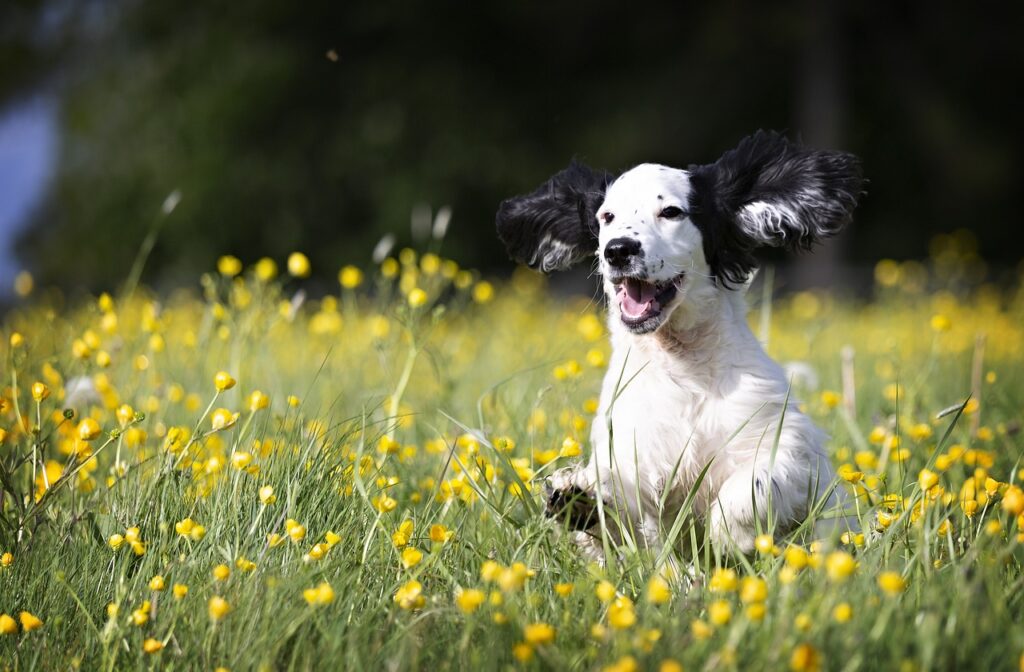Puppies can begin going outside at various developmental stages. Let’s dissect it:-
- Seven-week-old exploring the backyard:-
- You can safely take your puppies outside for play, exercise, and potty training starting at 7 week old.
- Take advantage of this opportunity to introduce them to the sights, sounds, and scents of nature.
- Don’t overdo the backyard visits at first to prevent your puppy from becoming overwhelmed.
2. Public Places (16 Weeks Old):-
- It’s a little more difficult to visit public areas. Puppies just out need to be protected from infections.
- Vaccinations are essential to a puppy’s development of immunity.
- Puppy vaccinations typically commence at 6 to 8 weeks of age. Furthermore, specific immunizations provide defense against maternal antibodies.
- Puppies receive their second round of vaccinations at 12 weeks, and then a final round four weeks later.
- With three rounds of vaccinations, the majority of puppies are fully protected by the time they are 16–17 weeks old.
- Common vaccines offer defense against rabies, distemper, parvovirus, and leptospirosis.
3. Socialization Window:-
- Puppies need to be socialized. Adults can experience less fear by exposing them to new experiences.
- The critical period for socialization is between 5 and 14 weeks, before they have received all recommended vaccinations.
- Puppies are most receptive to meet outside new people and trying new things during this time.
- Early socialization reduces the risk of later behavioral problems.
4. Juggling Safety and Socialization:-
- Although it may be tempting to hold off on socializing puppies until they have received all of their vaccinations, doing so can have unfavorable effects.
- Even before receiving all vaccinations, experts now advise early socialization.
- Carrying your puppies outside in public places: Use a backpack or carrier.
Some safe practices are:-
Avoiding high-risk areas is crucial:- Firstly, stay away from areas with heavy dog traffic. Secondly, avoid locations with potentially sick dogs.
Positive socialization:- Introduce your puppy to friendly individuals and well-behaved dogs. Additionally, encourage interaction in controlled settings, fostering positive experiences.
Keep an eye on your puppy’s comfort level, and adjust the exposure if they seem overwhelmed.
Keep in mind that every puppy is different, so modify your strategy to fit their needs and personality. Expose puppies to the outside world gradually while making sure they’re safe!


How Can I Socialize My Puppies If They Cant Go Outside?
It’s crucial to socialize your puppy indoors, particularly if they don’t get much exposure to the outdoors.
Here are some inventive methods to help your puppy become more self-assured and able to adjust to different situations within the comfort of your own home:
1. Exploration of Household Sounds:-
Acquaint your puppy:- with common sounds they may hear in the future. Let your puppy watch as you turn on appliances (such as the blender, hairdryer, or vacuum cleaner).
Positive associations:- During these sound sessions, give treats to calm behavior.
2. Games and Play Indoors:-
Interactive Playtime:- Enhance interactive playtime with gentle toy-playing movements. Additionally, utilize puzzle feeders, tug ropes, and plush toys to engage your furry friend further.
Hide and seek:- Leave toys or treats hidden for your puppy to find throughout the house.
Obstacle courses:- Construct basic obstacle courses out of chairs, boxes, and pillows
3. Clicker Training:-
By reinforcing desired behaviors, clicker training assists. Additionally, treats are associated with the clicker sound, fostering positive reinforcement.
Give out simple commands, such as “come,” “stay,” and “sit.”
4. Basic Puppy Obedience:-
Firstly, walk your dog on a leash inside. Then, put on a thin leash and lead your puppy about.
Gently handling:- In order to acclimate your puppy to grooming and veterinarian visits, softly touch their mouth, ears, and paws.
5. Using a Dremel to Trim Your Dog’s Nails:-
Get your puppy accustomed to having their nails clipped. Additionally, you can use a Dremel tool with the grinder attachment to replicate the vibration and sound
Introduce the tool gradually without actually cutting the nails.
Keep these safety measures in mind:-
Prevent overwhelm:- To reduce stress, progressively introduce new experiences.
Never use force:- Instead of using force, give positive reinforcement.
Pay attention to body language:- Make sure your puppy is at ease when interacting with others.
As you spend time with your pet, observe how they develop into a self-assured, well-mannered dog!


How can I exercise my puppies if they can’t go for walks?
If going for walks outside isn’t an option, however, there are lots of indoor activities you can do to keep your puppy busy and active.
Here are some inventive methods for getting your pet moving around your house:-
1. Dog Treadmill:-
- Purchase a treadmill designed especially for dogs. For dogs, standard human treadmills are not safe.
- The benefits outweigh the price, even though it may seem expensive, especially in the winter or during the hot summer months. You can keep your dog content and healthy indoors.
2. Monkey in the Middle (ideal for puppies):-
- Take a close friend or relative in your arms.
- Take up positions at different ends of a hallway.
- Toss a favorite toy or ball back and forth.
Participate in each exchange with your dog by playing tug, while giving the toy a squeak, and holding mini-training sessions.
3. Using Stairs for Exercise:-
- For an excellent indoor workout, take your dog for a supervised walk up and down the stairs
- Especially if your puppy’s joints are developed enough to handle it.
4. Hide and Seek with Treats:-
- Disperse treats over your entire home or just a room.
- Motivate your dog to locate them.
- This stimulates their mind and nose, which benefits their mental health.
5. Indoor Fetch:-
- Make a space clear and engage in a game of fetch using lightweight balls or plush toys.
- Verify that there is adequate space to prevent tipping over objects.
6. Snuffle Mats:-
- You can conceal treats in these mats’ secret pockets.
- Your dog will take pleasure in sniffing and looking for the treats.
Puzzle feeders:-
- Give your dog mental exercise by using interactive food puzzles.
2. Training Sessions:-
- Instruct them on basic commands such as “sit,” “stay,” and “come.”
- Hide kibble or treats inside for them to discover.
- Mental workouts are equally as crucial as physical ones.
Don’t forget to modify these activities according to the age, breed, and specific requirements of your puppy. Additionally, enjoy spending time together indoors with your little friend

